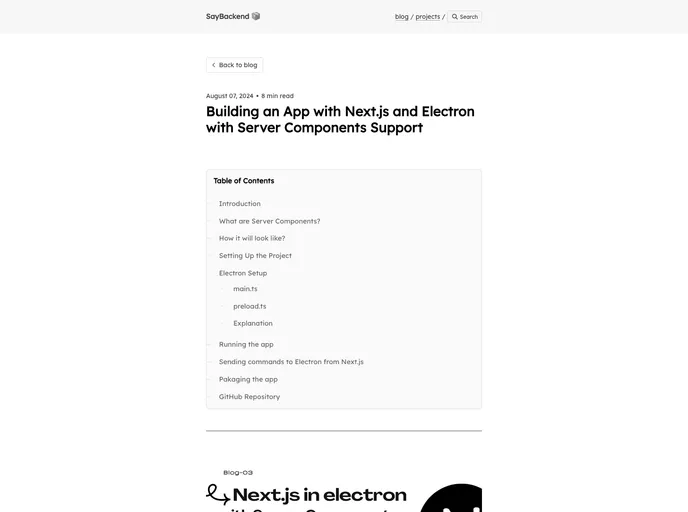
This is a template for building Electron apps with Next.js App router, SSR and Server Components
The combination of Next.js and Electron is an exciting development for those looking to create modern desktop applications with rich user experiences. This boilerplate offers a streamlined turborepo setup that seamlessly integrates Next.js capabilities such as Server-Side Rendering (SSR) and React Server Components (RSC) into an Electron application. By allowing developers to use a single codebase for both web and desktop environments, it significantly enhances productivity and reduces complexity.
This setup not only simplifies the development process but also ensures that your application is lightweight and efficient. With a focus on minimalistic configurations and practices like Docker containerization, you can deploy your application anywhere while maintaining an optimized performance.
SSR Support: Leverage Server-Side Rendering for improved performance and SEO capabilities in your Electron applications, providing a native-like experience.
Single Codebase: Use the same codebase for both web and Electron applications, allowing for easier maintenance and reducing duplication efforts.
Minimal Bundle Generation: The Next.js configuration produces a standalone bundle, perfect for Electron, ensuring small application sizes and quick load times.
Task Automation: A well-defined Makefile streamlines various tasks, from building and starting the development mode to linting and code formatting, enhancing developer efficiency.
Easy Dependency Management: Ensure your dependencies are managed with pnpm, keeping the project organized and streamlined.
Composite Build Tasks: Build both Next.js and Electron projects in one go or run them simultaneously in development mode, making integration seamless.
Flexible Distribution Options: Supports distribution builds for different environments, including Debian, making it adaptable to various deployment scenarios.
Watch Mode for Development: Enables live updates during development, allowing for real-time feedback and faster iteration cycles.